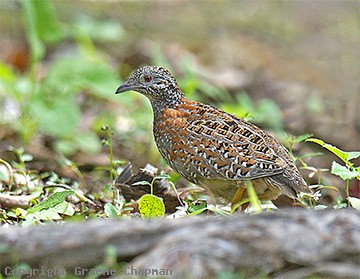
Turnix varia
TAXONOMY
Perdix varia Latham, 1801, Sydney, New South Wales. Closely
related to chestnut-backed and buff-breasted buttonquails (T.
castanota and T. olivii, respectively). Three subspecies recognized;
that on New Caledonia very distinct and may be full species.
OTHER COMMON NAMES
English: Varied buttonquail; French: Turnix bariolй; German:
Buntlaufhьhnchen; Spanish: Torillo Pintojo.
PHYSICAL CHARACTERISTICS
6.7–9.1 in (17–23 cm); male 1.9–3.3 oz (53–94 g), female
2.5–4.7 oz (72–134 g). Large buttonquail, reddish with mottled
gray breast, slender bill, and red eyes. Female larger and redder.
Juvenile smaller, grayer, and more mottled, without red,
and with pale eyes.
DISTRIBUTION
T. v. varia: eastern, southeastern, and southwestern Australia,
including Tasmania; T. v. scintillans: islands off southwestern
Australia; T. v. novaecaledoniae: New Caledonia.
HABITAT
Scrub, grassy woodland, open forest, grassy clearings in dense
forest, and heath.
BEHAVIOR
Terrestrial, diurnal, and partly nocturnal. Migrates at night.
Strongly territorial.
FEEDING ECOLOGY AND DIET
Eats seeds, green shoots, and invertebrates obtained by gleaning
and scratching on the ground.
REPRODUCTIVE BIOLOGY
Lays from late winter to autumn in south and east of range, all
months of the year in the tropics. Females are sequentially
polyandrous but may form short-term monogamous bonds.
Clutch is usually three or four eggs, though up to five. Incubation
13–14 days. Chicks are fed by the male for 7–10 days, can
fly at 10 days, are fully feathered at 16 days, and reach adult
size at 23 days. Breeding success in one sample was 3.7 chicks
per successful nest, and 2.6 chicks per clutch started. Broods averaged
3.5 young in the first week, down to 2.3 in the second.
CONSERVATION STATUS
Not threatened. Widespread and uncommon to locally common;
declining in south Australian urbanized and agricultural regions.
Subspecies on New Caledonia, possibly a full species, rare or extinct.
Very similar species T. castanota and T. olivii of N. Australia
classified as Vulnerable and Endangered, respectively.
SIGNIFICANCE TO HUMANS
Established in aviculture.
Other popular Animals
Photo Gallery of - Painted buttonquail
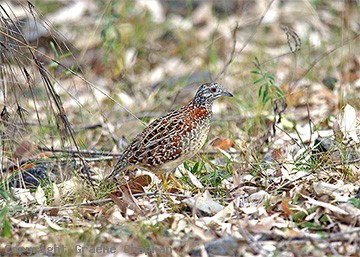
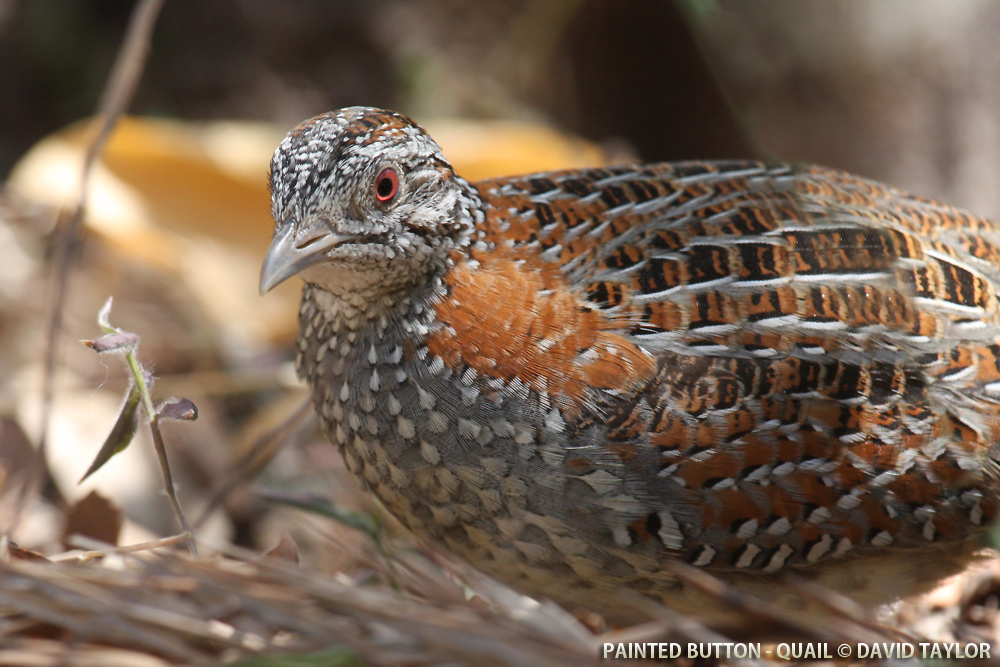
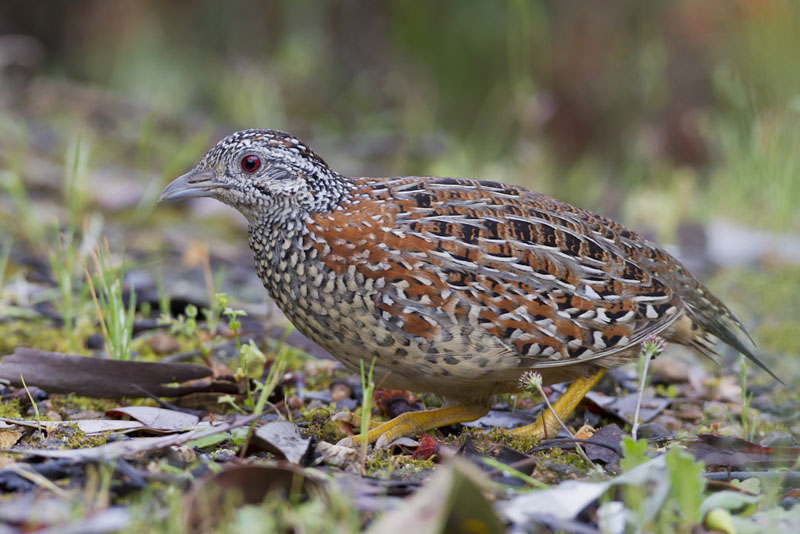
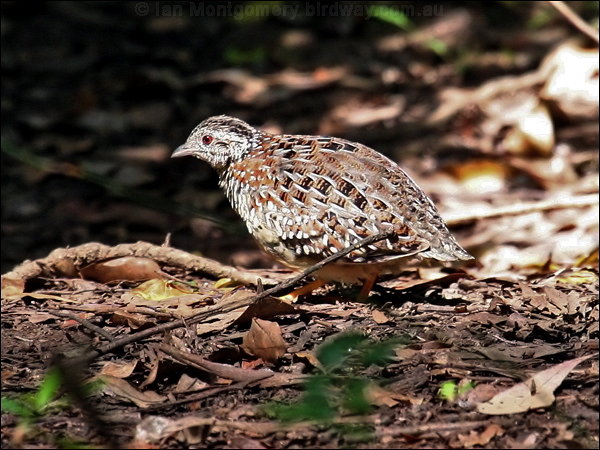
 Animalia Life
Animalia Life